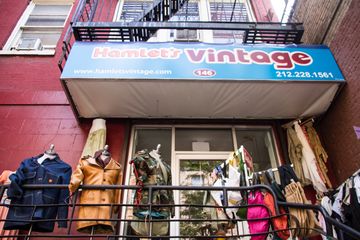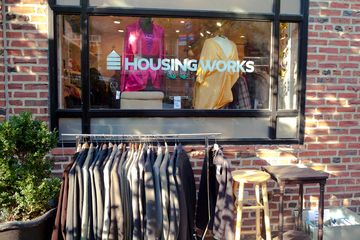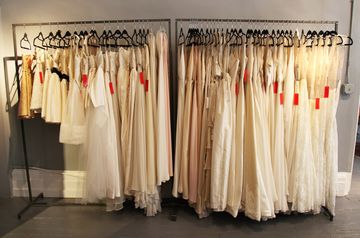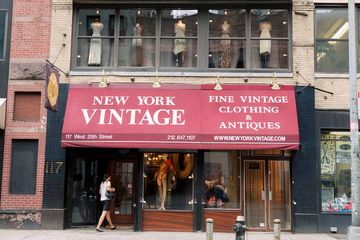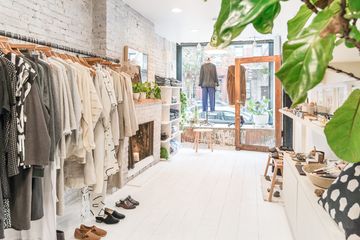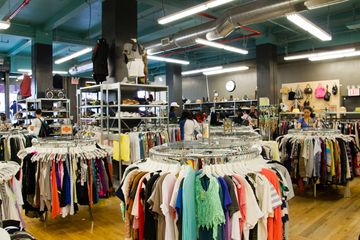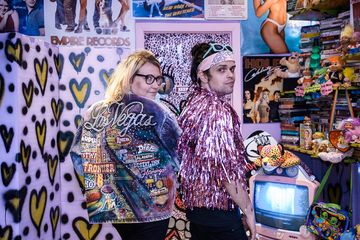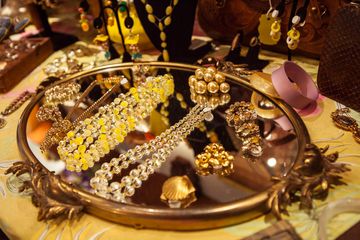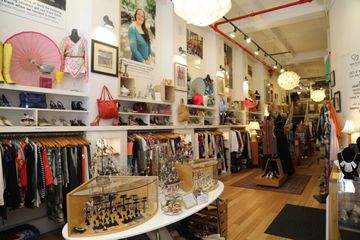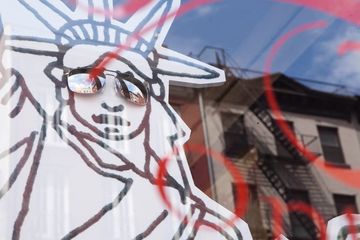A favorite of Lady Gaga, Katy Perry, and Sarah Jessica Parker, New York Vintage is what co-founder Shannon Hoey describes as “a leader in fashion. ” Shannon has spent the past twenty-three years amassing an extensive collection of vintage clothing, which includes a downstairs retail space open to the public and an upstairs industry archive open by appointment only. Over the years, Shannon has dressed red carpet actresses and world-famous singers, and has worked closely with costume designers on a range of films and TV series, including Boardwalk Empire and Mad Men. In 2010, First Lady Michelle Obama made a historic appearance in a New York Vintage Norman Norell dress, and since then, Shannon has dressed her on many occasions. When I first visited New York Vintage, I could not believe my eyes. The window display was stunning, as was the old-fashioned décor, complete with richly upholstered chairs, gilded mirrors, and ornate chandeliers. I was captivated by the wall of Vogue photographs, each one featuring a piece from Shannon’s collection, and of course, by the true treasure of New York Vintage: high-heeled shoes, flamboyant hats, and endless racks of beautiful dresses from designers around the world. Upstairs, the industry archive upstairs was filled with even more outrageous items, from a dress owned by Ulysses Grant’s wife to intricate McQueen headpieces. “Every piece here has historical significance, ” Shannon told me. “We’re an institution, a working museum archive. ” In fact, she added, many of the items at New York Vintage have been purchased from museums, and each piece is meticulously documented and entered into a database. Today, Shannon is one of New York’s foremost experts on fashion as an art form, so I was surprised to learn that she never set out to work with vintage clothing. “Fashion discovered me, ” she told me, explaining how her husband’s career in antiques first sparked her interest in vintage. It quickly became her passion, and within a few years, she and her husband co-founded New York Vintage. “He handles the business side of things, and I’m the creative director, ” Shannon explained. “So I get to do the fun part. ”But the vintage business can be difficult, too, and it took years of hard work for Shannon to build her collection. “The kind of fashion we seek is not easily found, ” she said. “It takes patience and capital, and you need to know what you’re looking for. ” In the early days, Shannon spent a lot of time searching for new pieces in Europe, but nowadays, with three young daughters, she travels much less. When I asked about her children, she said with a smile, “They spend a lot of time here with me, and they love playing dress-up. ”Shannon, unsurprisingly, also loves dressing up, and she told me that she has a lot of opportunities to wear items from her collection. “Halloween is my favorite holiday, ” she explained, “And last year I went to Allison Sarofim’s Italian futurism-themed party in a pink Mohawk and mod clothing. ” But Shannon’s favorite era is the 1920s. “I’m obsessed with all of it, ” she said. “The mindset, the freedom, the departure from women being bound and put in corsets. ”Still marveling over Shannon’s list of celebrity clients, which includes Julia Roberts and Beyonce, I asked if she ever gets starstruck. When celebrities first started flocking to the store, she told me, it was totally overwhelming, “like running from a tidal wave. ” But since then, the only time she has really been starstruck was her visit to the White House with the First Lady. “Some celebrities still catch me off-guard, ” she said, “Like the time Nicole Kidman showed up unannounced. But otherwise, I’m used to it. ”When I asked Shannon about the future of New York Vintage, she told me that they are hoping to expand overseas. “We want to open our doors to global clients, ” she told me, “maybe by opening an outpost in Europe. ” But until then, she told me, she will continue to do what she loves here in New York, working with designers, inspiring them and feeling inspired. For Shannon, the truly fulfilling part of her job is working with designers and models, creating with them and helping to communicate their vision. “I’m always inspired, ” she said with a smile. “I have the best job in the world. ”
